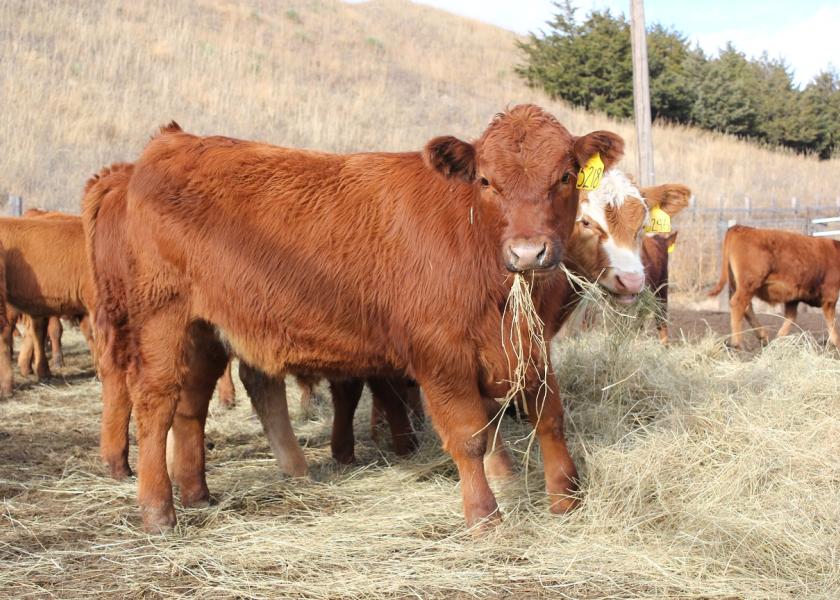Peel: High Grain Price Impact on Cattle Industry

Grain and oilseed prices have risen dramatically in the last three to four months. For example, the weekly cash price of corn reported for Dodge City, Kansas averaged $3.41/bu. from January-September, 2020. The price rose above $4.00/bu. by mid-October and by mid-January 2021 was reported at $5.44/bu. July corn futures are currently priced at $5.20/bu.
Market prices for corn are increasing to ensure that demand is rationed to match available supplies and adequate corn is available until the next harvest. Corn demand comes from many different markets including livestock feed, industrial use (primarily ethanol) and exports. As corn prices rise each market will react to reduce corn use in varying degrees according to the economic claim each demand type makes on corn. With corn as the main driver, other feed grains and by-product feeds will all generally rise proportionally through market arbitrage.
The cattle industry will react to high feed prices somewhat differently than other livestock species. Unlike hogs and poultry, where their monogastric biology means that using less feed implies reducing production, the ruminant biology of cattle means that the industry will use less grain by changing how cattle are produced more than by changing production levels. Indeed, the supply of feeder cattle is mostly determined for 2021 and those cattle will go through the feedlot as usual but with a different production system.
The central decision that determines how feeder cattle get finished and become part of the beef supply is feedlot placements. Individual feedlots often have particular preferences for size, breed and type, gender and overall quality of the feeder cattle they purchase but also flexibility to feed a variety of animals.
In general, feedlots can place feeder cattle weighting from less than 600 pounds to over 1,000 pounds. One of the biggest decisions for feedlots is whether to “buy pounds” (place heavier feeder cattle) or “feed the pounds onto the cattle” by placing lighter weight feeder cattle. This decision will change according to feed prices. As high feed prices push feedlot cost of gain up, feedlots have an incentive to “buy more pounds” and place heavier feeder cattle.
Thus, the cattle industry responds to corn market signals to use less corn by placing cattle at heavier weights and using other (i.e. forage) feeds to add additional weight to cattle prior to feedlot placement. This is the advantage (and necessity!) of the cattle industry to use the ruminant capabilities of cattle to respond to the corn market situation. If all the cattle finished in feedlots in 2021 (that would have been fed anyway) are placed, say, an average of 100 pounds heavier, the amount of reduction in total concentrate feed use is significant.
When feedlots demand heavier cattle, prices for lighter weight feeder cattle will decline relative to heavier cattle. For example, the price 825-pound steers in Oklahoma is currently about $131/cwt. When corn is, say $3.65/bu., feedlots would be willing to pay roughly $155/cwt. for a 575-steer based on the cost of gain to put on the 250 pounds from 575 to 825 pounds. When corn price increases to say, $5.35/bu., the increased cost of gain means that the feedlot would only be willing to pay roughly $146/cwt. for a 575-pound steer – even though the price of the 825 pound steer has not changed.
Of course, higher feed prices likely also means that the overall feeder cattle price level will decline as well. The change in feedlot demand for light versus heavy weight feeder cattle simultaneously provides incentives for stocker producers to add the needed additional weight to feeder cattle. In the example above, the value of stocker gain is roughly $0.75/lb. when corn is $3.65/bu. but increases to $0.97/lb. when corn price increases to $5.35/bu.
Higher corn prices provide incentives for feedlots to change how cattle are finished and those decisions, in turn, will signal the rest of the cattle industry to make production adjustments utilizing the ruminant flexibility of cattle in response to changing feed prices. Relative to a given fed cattle price level, higher feed prices imply lower feeder cattle prices with prices of lighter weight feeder cattle under more pressure than heavier feeder cattle.







